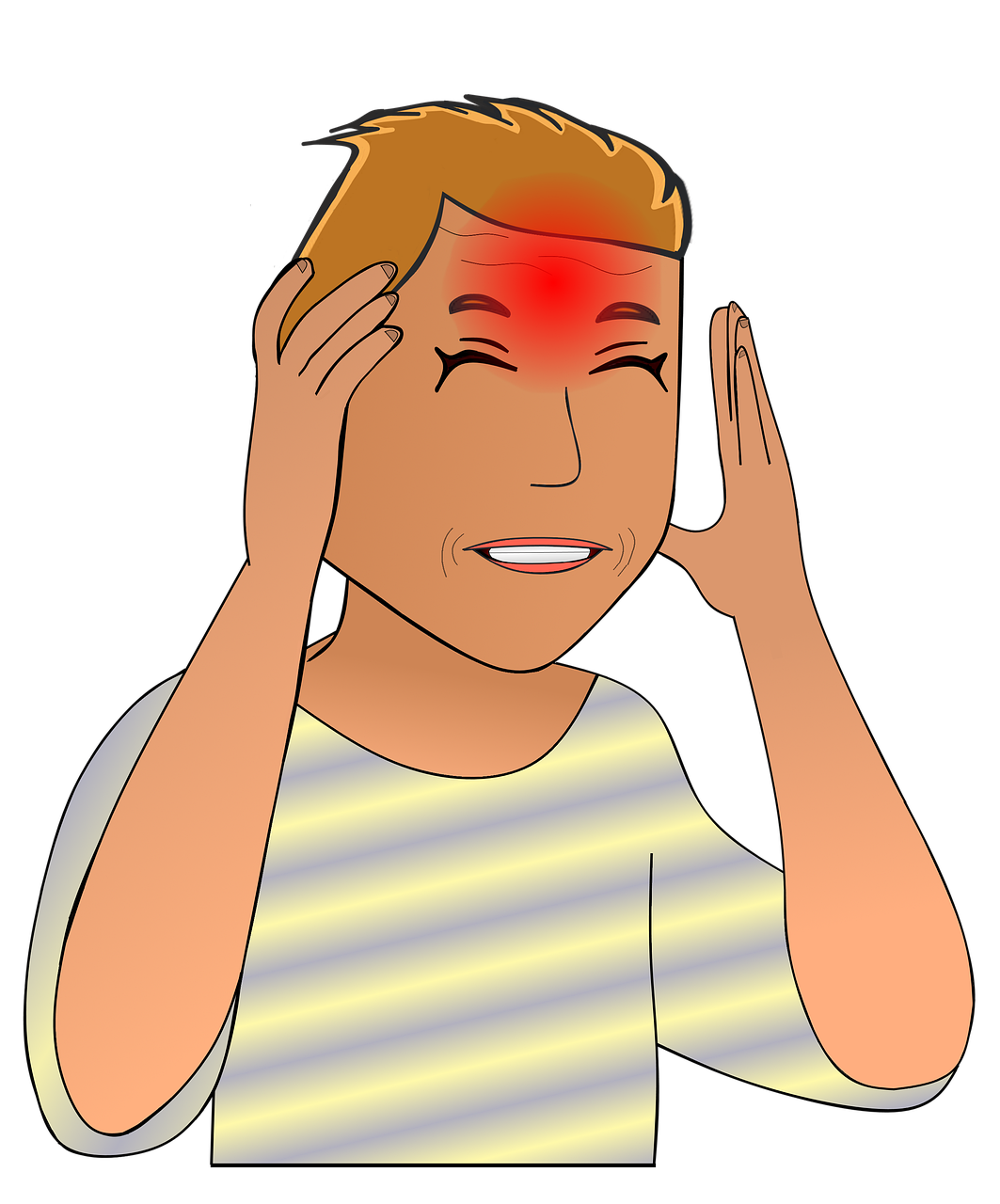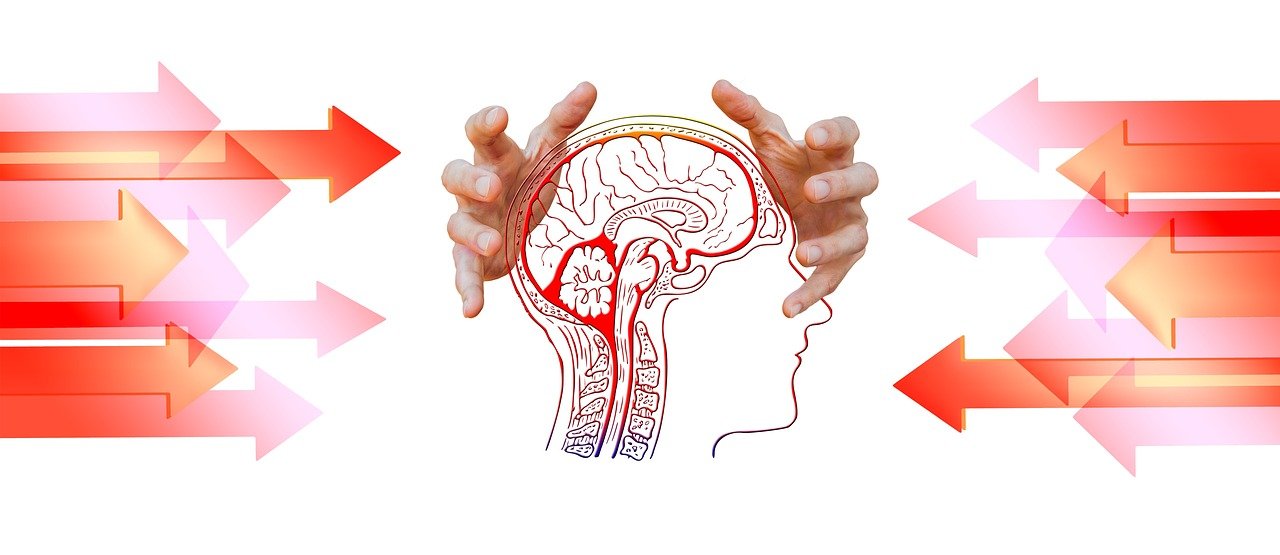
Having a migraine can make getting a good night’s sleep seem impossible, but there are tactics you can try to help ease the pain and improve your sleep quality. From creating a soothing sleep environment to practicing relaxation techniques, this article will provide you with practical tips on how to sleep better with a migraine. So if you’re tired of tossing and turning during a migraine episode, read on to discover ways to find some much-needed rest and wake up feeling refreshed.

Creating a Soothing Sleeping Environment
Having a calm and relaxing sleeping environment is crucial for those experiencing migraines. By reducing noise, controlling light, and adjusting room temperature, you can create the perfect environment to promote a good night’s sleep even with a migraine.
Reduce Noise
Excessive noise can exacerbate migraine symptoms and make it difficult to fall asleep. To reduce noise, try using earplugs or noise-canceling headphones. Additionally, you can use a white noise machine or play soothing sounds, such as nature sounds or soft music, to drown out any disruptive noises.
Control Light
Sensitivity to light is a common symptom of migraines. To create a sleep-friendly environment, use blackout curtains or blinds to block out any outside light sources. Consider using a sleep mask to further ensure complete darkness. It’s also important to avoid bright screens from electronic devices before bed, as they can stimulate the brain and disrupt sleep.
Adjust Room Temperature
Room temperature plays a significant role in promoting quality sleep. Keep the room cool, but not too cold, as extreme temperatures can trigger migraines. Find the temperature that works best for you and use a fan or air conditioner to maintain it. Investing in a comfortable mattress and breathable bedding materials can also help regulate body temperature and improve overall sleep quality.
Managing Pain and Discomfort
Dealing with pain and discomfort while trying to sleep with a migraine can be challenging. However, there are several strategies you can employ to alleviate these symptoms and promote a more restful sleep.
Use Hot or Cold Compresses
The application of hot or cold compresses to the head or neck can provide relief for migraine pain. Experiment with both methods to determine which works best for you. A cold compress can help reduce inflammation, while a warm compress can help relax tense muscles. Place the compress on the affected area for around 10-15 minutes before bed to ease your migraine symptoms.
Try Relaxation Techniques
Practicing relaxation techniques before bed can help you wind down and alleviate migraine-related tension. Deep breathing exercises, progressive muscle relaxation, and guided meditation are effective techniques to promote relaxation and soothe both the body and mind. Incorporate these techniques into your bedtime routine to create a calming atmosphere conducive to sleep.
Take Medications as Prescribed
If prescribed medications, such as pain relievers or migraine-specific medications, by your healthcare provider, ensure you take them as directed. Take note of whether or not your medication impacts your ability to fall asleep, and consult your doctor if you notice any adverse effects on your sleep patterns. It’s essential to communicate openly with your healthcare provider about your sleep quality and any concerns you may have.

Establishing a Bedtime Routine
Maintaining a consistent bedtime routine can signal to your body that it’s time to sleep, even with a migraine. A consistent sleep schedule, winding down before bed, and avoiding stimulants and heavy meals are key components to establish an effective bedtime routine.
Stick to a Consistent Sleep Schedule
Set a regular sleep schedule and stick to it as much as possible. This means going to bed and waking up at the same time each day, even on weekends. Consistency helps regulate your body’s internal clock, making it easier to fall asleep and wake up refreshed. Aim for seven to nine hours of sleep per night to ensure you’re getting an adequate amount of rest.
Wind Down Before Bed
Engage in relaxing activities before bed to help your body transition into sleep mode. Dim the lights, read a book, take a warm bath, or listen to soft music to signal to your brain and body that it’s time to unwind. Avoid mentally stimulating activities, such as working or checking emails, as they can make it difficult to relax and fall asleep.
Avoid Stimulants and Heavy Meals
Caffeine and alcohol can disrupt your sleep patterns and worsen migraine symptoms. Avoid consuming stimulants like coffee, tea, and energy drinks, especially in the evening. Opt for decaffeinated herbal teas instead. Additionally, try to avoid heavy, rich, or spicy meals close to bedtime, as they can lead to indigestion and discomfort, which may further disrupt sleep.
Choosing the Right Sleep Position
Finding the most comfortable sleep position can help alleviate migraine symptoms and promote a better night’s sleep. Experimenting with different positions and using supportive pillows can make a significant difference in your sleep quality.
Experiment with Different Positions
While there is no one-size-fits-all sleep position for migraines, some positions may be more beneficial than others. Many individuals find relief by sleeping on their back with a pillow under their knees to help align the spine. Others prefer sleeping on their side with a pillow between their knees to alleviate pressure on the hips and lower back. Experiment with different positions to find the one that provides the most comfort for you.
Use Supportive Pillows
Choosing the right pillow can make a big difference in alleviating migraine-related pain and discomfort. Look for a pillow that provides adequate support for your head, neck, and shoulders. Memory foam, latex, or down pillows can offer excellent support and help maintain proper spinal alignment. Consider investing in pillows specifically designed for migraine sufferers, as they may have unique features to reduce pressure on the head and neck.

Addressing Sleep Disruptions
Various factors can disrupt sleep when experiencing migraines, such as anxiety, blue light exposure, and indigestion. Implementing strategies to manage anxiety and stress, limit blue light exposure, and minimize nighttime indigestion can help improve your sleep quality.
Manage Anxiety and Stress
Anxiety and stress can intensify migraine symptoms and make it challenging to relax and fall asleep. Incorporate stress management techniques into your daily routine, such as mindfulness exercises, journaling, or engaging in a calming hobby. If anxiety persists, consider speaking with a therapist who can provide strategies to address and manage your specific needs.
Limit Blue Light Exposure
Blue light emitted by electronic devices, such as smartphones, tablets, and laptops, can disrupt your sleep-wake cycle by suppressing melatonin production. To minimize blue light exposure, avoid using electronic devices at least one hour before bed. If you must use them, consider using blue light-blocking glasses or enabling the device’s built-in night mode, which reduces blue light emission.
Minimize Nighttime Indigestion
Indigestion and heartburn can disturb sleep and worsen migraine symptoms. To reduce the risk of nighttime indigestion, avoid eating large meals close to bedtime. Instead, opt for lighter, easily digestible snacks if needed. Allow at least two to three hours between your last meal and bedtime to ensure proper digestion. Elevating the head of your bed slightly may also help prevent acid reflux during sleep.
Creating a Supportive Bedding Environment
Investing in a comfortable mattress and pillow and choosing breathable bedding materials is essential for creating a supportive sleeping environment for those with migraines.
Invest in a Comfortable Mattress and Pillow
A high-quality mattress and pillow can significantly impact sleep comfort and overall well-being. Look for a medium-firm or firm mattress that provides optimal support for your body. Memory foam mattresses have been found to be beneficial for individuals with migraines, as they conform to the body’s contours and relieve pressure points. Similarly, invest in a supportive pillow that aligns your neck and spine while providing adequate cushioning.
Choose Breathable Bedding Materials
Certain bedding materials can trap heat and cause discomfort, leading to poor sleep quality. Opt for breathable bedding materials such as cotton or bamboo, which allow for proper air circulation and temperature regulation. These materials wick away moisture and help keep you cool and comfortable throughout the night. Avoid synthetic fabrics that may trap heat and exacerbate your migraine symptoms.
Consider Using Sleep Aids
For some individuals, sleep aids like mattress toppers, body pillows, or weighted blankets can enhance sleep quality. Mattress toppers add an extra layer of comfort and cushioning, while body pillows provide additional support and alignment. Weighted blankets can promote relaxation and decrease anxiety, helping you fall asleep faster and stay asleep longer. Experiment with these sleep aids to see if they provide any relief for your migraine symptoms.
Utilizing Sleep Hygiene Techniques
Practicing good sleep hygiene is vital for creating a conducive sleep environment and optimizing sleep quality, especially for individuals with migraines.
Keep the Bedroom Dark and Quiet
Ensure your bedroom is as dark and quiet as possible. Use blackout curtains or blinds to block out any unwanted light, and consider using earplugs or a white noise machine to mask any disruptive sounds from outside. Creating a serene atmosphere can help promote relaxation and minimize sensory disturbances that may trigger migraines.
Avoid Electronic Devices before Bed
The blue light emitted by electronic devices can interfere with your body’s natural sleep-wake cycle. Aim to avoid using electronic devices, including smartphones, tablets, and televisions, for at least one hour before bed. Instead, engage in calming activities like reading a book, practicing relaxation techniques, or taking a warm bath to prepare your mind and body for sleep.
Maintain a Comfortable Room Temperature
The ideal room temperature for sleep may vary from person to person, but generally, a cool environment promotes better sleep. Aim for a temperature between 60-67°F (15-19°C) to create a comfortable sleeping environment. Experiment with different temperatures to find what works best for you and use fans, air conditioners, or blankets to adjust accordingly.
Trying Natural Remedies
In addition to other strategies, there are natural remedies that can help promote sleep and alleviate migraine symptoms.
Essential Oils for Relaxation
Certain essential oils, such as lavender and chamomile, are known for their relaxant properties. Consider using a diffuser or applying a few drops of these oils to a cotton pad placed near your bed. The soothing scents can help create a calming atmosphere and promote relaxation, potentially easing migraine-related tension and enabling better sleep.
Herbal Teas for Sleep
Herbal teas can have relaxing properties that aid in sleep. Chamomile tea, in particular, is a popular choice known for its calming effects. Brew a cup of chamomile tea before bed and sip it slowly while engaging in your bedtime routine. Avoid any teas containing caffeine, such as green or black tea, as they can interfere with sleep.
Acupuncture or Acupressure
Acupuncture and acupressure are alternative therapies that may provide relief for migraine symptoms and improve sleep quality. These practices involve stimulating specific pressure points on the body to promote relaxation and pain reduction. Consult a licensed acupuncturist or acupressure practitioner to explore these options and determine if they may be beneficial for your individual needs.
Seeking Professional Help
If your migraines significantly impact your sleep and quality of life, it may be beneficial to seek professional help from healthcare providers who specialize in sleep disorders and migraines.
Consult a Healthcare Provider
If your migraines are frequent, severe, or persistent, it’s important to consult a healthcare provider, such as a neurologist or a sleep medicine specialist. They can help identify underlying causes and recommend appropriate treatments or lifestyle modifications. Your healthcare provider may conduct tests and assessments to determine the best course of action for managing your migraines and improving your sleep.
Consider Cognitive Behavioral Therapy for Insomnia
Cognitive Behavioral Therapy for Insomnia (CBT-I) is a proven therapy that addresses the root causes of sleep difficulties. It focuses on changing behaviors and thoughts that contribute to poor sleep, such as anxiety or unrealistic expectations about sleep. A trained therapist can guide you through CBT-I techniques and help you develop healthy sleep patterns, decreasing the impact of migraines on your sleep quality.
Explore Preventive Migraine Medications
In some cases, healthcare providers may recommend preventive medications to reduce the frequency and severity of migraines. These medications aim to suppress or minimize migraine attacks, potentially improving sleep quality. Discuss the option of preventive medications with your healthcare provider to determine if they may be appropriate for your specific situation.
Monitoring Sleep Patterns and Triggers
Keeping track of your sleep patterns and identifying potential triggers can provide valuable insights into your migraines and help you make informed decisions about your sleep strategies.
Use a Sleep Diary
A sleep diary is a useful tool to track your sleep patterns and identify any patterns or triggers that may be affecting your sleep quality. Record the time you go to bed, the time you wake up, the duration of your sleep, and any factors that may have influenced your sleep, such as caffeine intake or stress levels. Analyze the data from your sleep diary to identify any recurring patterns or triggers that may be impacting your sleep and migraines.
Identify Potential Migraine Triggers
Migraines can be triggered by various factors, such as certain foods, stress, hormonal changes, or environmental factors. Take note of any potential triggers you suspect may be contributing to your migraines. This could include specific foods or beverages, changes in weather, bright lights, strong smells, or specific activities. By identifying and avoiding these triggers, you may decrease the frequency or severity of your migraines and improve your sleep quality.
Track the Effectiveness of Sleep Strategies
As you implement different sleep strategies to improve your sleep with migraines, regularly assess their effectiveness. Pay attention to how each strategy impacts your sleep quality and migraine symptoms. Some techniques may work better than others, and it may take time to find the optimal combination that suits your individual needs. Continuously monitoring and adjusting your sleep strategies ensures that you’re making progress toward achieving better sleep and managing migraines effectively.
In conclusion, finding ways to sleep better with a migraine is crucial for managing symptoms, promoting relaxation, and enhancing overall well-being. By creating a soothing sleeping environment, managing pain and discomfort, establishing a bedtime routine, choosing the right sleep position, addressing sleep disruptions, creating a supportive bedding environment, utilizing sleep hygiene techniques, trying natural remedies, seeking professional help, and monitoring sleep patterns and triggers, you can significantly improve your sleep quality and reduce the impact of migraines on your daily life. Remember, it’s important to consult with your healthcare provider to personalize these strategies and find the best approach for managing your migraines and optimizing your sleep. With perseverance and the right tools, you can achieve restful, rejuvenating sleep even with migraines.





